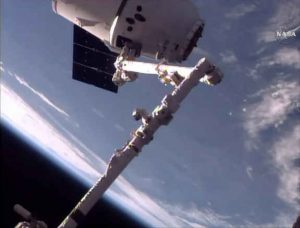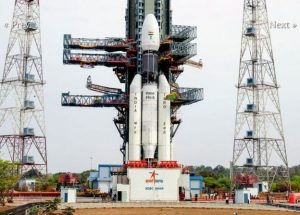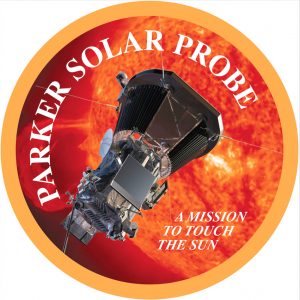It seems as if every time I decide to write an update on new events happening in our exploration of space SpaceX corporation has to get a mention. Every month it seems like Elon Musk and his engineers are achieving some new goal toward increasing humanity’s access to outer space.

This month SpaceX has not only launched its 11th resupply mission to the International Space Station. Not only successfully landed the rocket’s first stage for the 11th time. But the pressurized Dragon capsule that was launched and is now docked at the ISS is itself a reused capsule from SpaceX’s fourth resupply mission back in 2014. This means that only the rocket’s second stage was lost in the mission, a degree of reuse not achieved since the Space Shuttle. Progress, progress.
The nation of India has also achieved a milestone in the past week with the first launch of its new heavy GSLV Mark III rocket, see picture below. The GLSV Mark III is the Asian nation’s attempt to catch up to the space big shots in the growing space industry and India even plans on using the rocket to begin manned launches starting in 2024!

There is also some tantalizing news from NASA’s Curiosity Rover which is still exploring Gale Crater on the Martian surface. Now NASA’s three rovers; Spirit, Opportunity and Curiosity have already found a considerable amount of evidence that Mars once possessed large bodies of water that could have supported life 3.1 to 3.8 billion years ago. Recently however Curiosity has been able to show that the lake that once filled Gale Crater had different levels of oxygen at different depths, a type of environment similar to lakes on Earth and providing multiple opportunities for many forms of life.

Before you get too excited it is likely that these conditions occurred naturally on Earth and life evolved to fit those conditions but it is still strong evidence that conditions favourable to life existed on Mars some 3 billion years ago.
But to my mind the big news in space exploration is NASA’s announcement of a spacecraft that will be sent much closer to the Sun than any probe has ever gone. The Parker Solar Probe is named for Doctor Eugene Parker who named and studied the solar wind starting in the 1950s. The spacecraft is expected to come as close as 6 million kilometers to the Sun, even dipping inside the Sun’s ‘Atmosphere’ which is called the corona.

As a comparison the Earth orbits about 150 million kilometers from the Sun and even Mercury, the nearest planet maintains a distance of 60 million kilometers. That means Parker will come ten times closer to the Sun than boiling hot Mercury!
Getting so close to the Sun means that the Parker Solar Probe is going to require special protection for it’s vital instruments and equipment. This is provided by an 11.5cm thick shield made of carbon composite materials. This shield will allow Parker to survive temperatures as high as 1400 degrees Celsius.
The Parker Solar Probe will be launched from NASA’s Kennedy Space Center between 31July and 19 August of 2018. This timing is especially critical because the probe’s mission includes seven, count’em seven flybys of Venus to use the planet’s gravity to alter the spacecraft’s obit bringing it ever closer to the Sun. Unfortunately that many gravity boosts are going to take seven years to accomplish so this is going to be a long mission.
If you’d like to read more about the Parker Solar Probe, and keep track of the mission as I plan on doing, click on the link below to go to the official NASA site for the mission.
https://www.nasa.gov/content/goddard/parker-solar-probe
That’s Space news for this month. Till next time.
